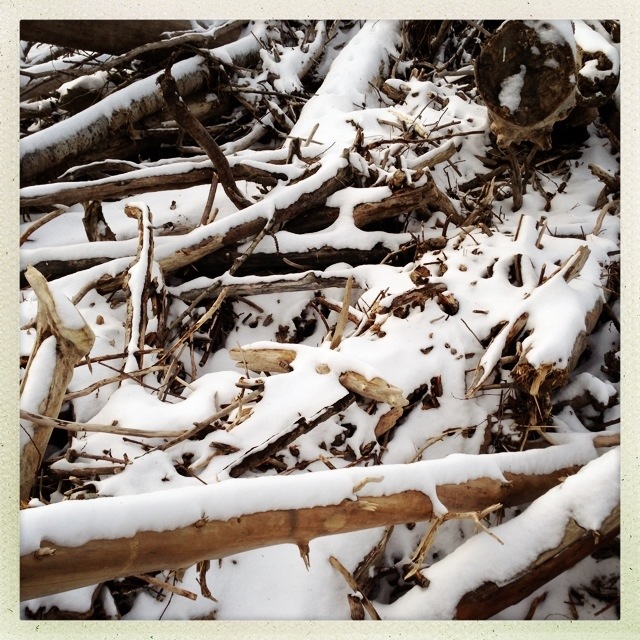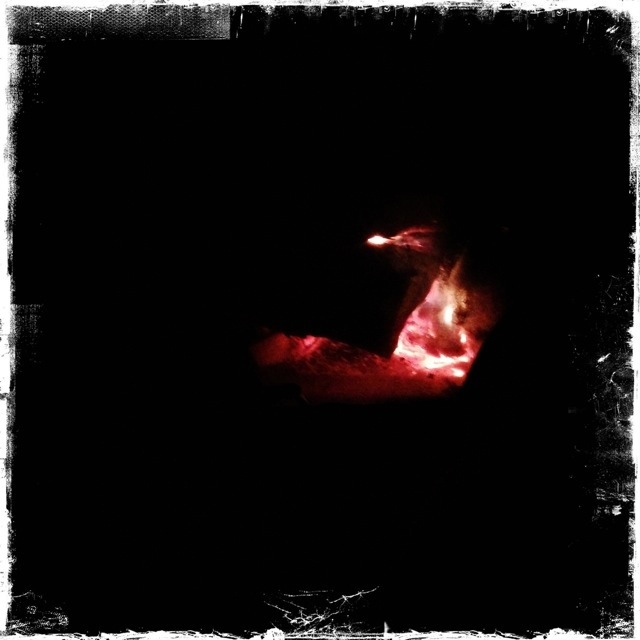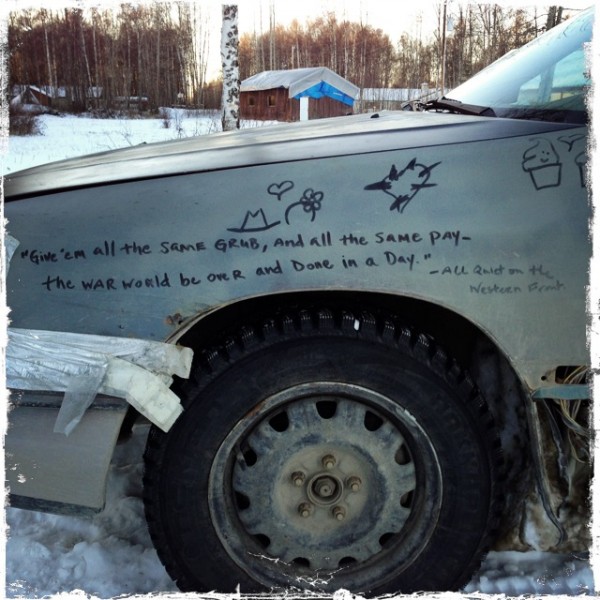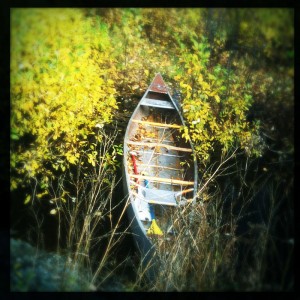I love the way, given time, nature tends to make all things beautiful.
Monthly Archives: November 2012
November Dark
“One of the supreme ironies of civilized society is that the lights we
switch on to allow sight in the dark blind us to seeing our place in
the stars.”I got this from my friend Teri, who got it from her friend Stephen, who says he got it from the world.
If you are going to live at latitude 62, it helps to have an appreciation for darkness. You don’t have to be happy to see the days getting shorter, nobody does that! But if you can’t at least come to friendly terms with darkness, you might need to head south.
Lucky for me I have always had at least some fondness for the dark. Years ago my wife and I bought a house and moved in, in October. It had a yard light, a big mercury streetlight on a metal pole. To my disbelief I discovered that there was no switch for that light, only a photo sensor. Whenever it got the least bit dark, the light was on. After all, you wouldn’t ever want to experience darkness-god forbid- or look at the stars, the aurora, or even see what the dogs were barking at out in the woods beyond that blinding circle of electric light. I tied a rope to the pole and the back of my truck and tore it down.
I find automated lights not convenient but annoying, especially if there is no manual override. Just because I open the door of my truck doesn’t mean I want the dome light on. Maybe I’m trying to keep my night vision, maybe I want privacy.
As I write this, I am sitting in my cabin by the orange glow of the wood stove. The teapot is heating over the blue flame of the gas burner. Outside the last of the sunset is fading in a pale yellow swath behind the birches. It’s getting dark. The wind is blowing in the woods. It’s all kind of melancholy and bittersweet. And real.
Would I want it dark all the time? Of course not. I’m not at all sure I could live in Barrow or Kotzebue. Bit I am sure we lose something important if we try to banish darkness from our sight, and from our selves.
Elements of a Good Day
Step One: Drink tea and read a good book in front of the fire while the cabin warms up.
Step two: Replenish the fuel supply.
Step Three: Get out and get some sunshine and exercise.
Step four: Receive a great truth from a humble source.
November Light
Little House in the Big Woods
First Real Snow
Beautiful Evening on the Talkeetna beach
The Great Equinox Flood of 2012, Part Five
…Continued from part four.With the Honda humming along, I now had phone and internet once again. I called Steve and found out the wall of water had actually been predicted for the Susitna River, not the Talkeetna. However, this close to the confluence, it could still raise my level if the Susitna backed up the slough. Wait and watch, I guess.
Now it was time to walk towards town to meet Annie. I canoed to the tracks again, and started walking south. By now the river was significantly higher than just a few hours ago. On my left the flooded woods was within three or four vertical feet of coming over the tracks. While on my right I was looking down at the flooded Chase trail, at least ten feet lower. Clearly the railroad embankment was acting as a dam. I later learned that it had the same effect in town, flooding the east side of town, while sparing houses on the west side, including downtown. Again, I? noticed what a gorgeous day it was, sunshine and blue sky la-dee-dah. Made everything seem even weirder.
Before long I was very happy to see Annie appear from around the bend, a brightly colored speck walking north. She said she had to talk her way past 3 roadblocks, and felt like the only rat climbing UP the ropes to the ship. Her trip across the catwalk had been very scary, the bridge just humming with the raw power of the water blasting underneath, trees smashing into the abutments, while a helicopter followed her overhead. Yes, they were in fact evacuating Talkeetna, and the road was blocked at the top of the hill on the way into town. As we walked north, I looked around through her eyes, as mine had at least a couple days to get used to the situation. The railroad embankment we walked on was the only land in sight in any direction. Everything else was a loud chaos of fast moving, ice cold brown water. Not for the first time I thought – she’s a brave woman.
Back to the cabin we went, via Canoes Two and One. I moved some things up into the cabin, tied things to trees, etc. But mostly we just watched the river rising…and rising…..and rising…
It was now over the upper bank and into the front yard. The dog yard was underwater.
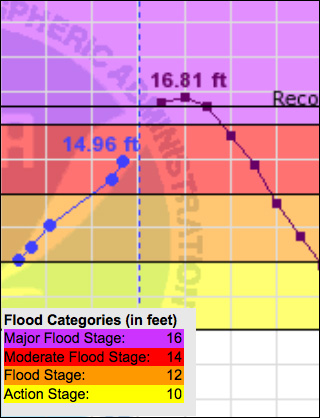
When I saw this, I knew it was time.
Around four o’clock Annie said she thought we should move the dogs and ourselves to a more strategic location. I was hesitant, not wanting to leave the cabin, and not wanting to do all the work involved in relocating – I had already had a long night and day. Well, she said, we can do it now, with the sun shining, or we can do it at 3 A.M. in the dark with the rain blowing sideways. She had a point. I pulled up the river forecast on the web. The dotted vertical line represents the current point in time. We were at 15 feet and predicted to go to almost 17. There would be no land in sight here either, and no place for the dogs to be out of the water. It was time to go.
Seeing my exhaustion, Annie suggested I take a short nap, she would watch over everything, and then we would move. Gratefully, I went upstairs and passed out for half an hour. Then we started moving dogs to the west side of the tracks. What a circus that was!
continued in part six…
The Great Equinox Flood of 2012, Part Four
In our previous episode, Josh was trying to plan how to get the generator…
Although Steve’s camp was only about a quarter mile down the slough, it was going to be a challenge. I could get there by river – in about 5 seconds! – but there was no way I was getting a canoe back up against that current. With the water well into the woods, lining the boat upstream by rope would be very difficult as well. On the other hand, travel overland required crossing three chunks of water – normally dry channels flowing into the main channel like side streets – and the railroad grade and tracks. Luckily I am addicted to canoes, of which I had four on hand of my total nine. Here is what I did:
First task: stage canoes for return. I took two canoes from the cabin and used them to cross the first flooded swale between my cabin and the tracks, which I could still walk across, but was an inch from my boot tops and rising, and I’d be carrying a heavy load coming back. I left one tied there as a ferry and took the second one to the railroad embankment. The drainage ditch there is usually only about five feet across and a foot deep, but on this day it was about ten feet across, six feet deep. I staged the second canoe there, more like a bridge than a ferry.
Returning to the cabin, I re-crossed the swale with Canoe One, but played out a rope as I went, so I would be able to retrieve it from the other side. Then I launched Canoe Three into the river in front of the cabin, or actually what would normally have been the game trail along the bank through the woods, and was now whitewater. Dodging birch trees at video game speed, I sailed downstream to the bridge, which by now required ducking to get under it in the canoe. The third flooded channel was the one that came out just above Steve’s camp, separating the camp from the trail out to the tracks, and my place. I ran the canoe up this channel and arrived at my destination.
Steve had said the generator was stashed in a tree, but I found it had fallen to the ground, in danger from the rising water. I grabbed it, the gas can, and the other stuff Steve had requested and carried all that to the canoe ( Canoe Three, remember). Then I crossed to the tracks side of that slough, and walked out to the tracks. My wheeler was parked there already from two days earlier. I drove the wheeler back to Canoe Three, loaded all the swag onto the rear rack, and drove out to the tracks – leaving Canoe Three tied there to provide a ferry to Steve’s camp should either of us need it.
At the tracks, I parked the wheeler and lugged all the stuff up the embankment, across the tracks, and down the other side to where Canoe Two was waiting as a bridge across the ditch. Walking across Canoe Two, I portaged everything again, over to the swale near my cabin. There I reeled in Canoe One from the opposite side, and used it to carry it all across the final obstacle, and then a short carry to the cabin. At the cabin, I still had the fourth and final canoe tied to a tree by the door, should a quick getaway be needed. You just can’t have too many canoes.

Success! My connection to the outside world re-established. When you have canoes, a hammer, and an iPhone, you’re gonna make it.
Now I had the generator, and hence telephone capacity. I had vessels staged to reach the tracks and the Chase trail, to go south to town, north to the hills, or to go back to Steve’s if needed. Two hours had passed since I got the call from Steve.
All I needed now was for the generator to start.
First pull.
continued in part five…
The Great Equinox Flood of 2012, Part Three
…Continued from part two.
I spent most of Thursday September 20th close to home, checking the river every five minutes, checking the online river forecast about once an hour, moving things off the

Hauling gas to the wheeler on the other side of the bridge. ( photo taken by Elf on another occasion)
ground, and generally looking around and asking myself “what if”? I moved a few of the dogs back from the river bank into the woods. The wheeler was already parked on the far side of the tracks, as the water under the bridge was too deep to drive it through. I carried some gas out to fill its tank. There were a few things I was worried about, but couldn’t do much about. The snowmachine. The dog houses ( which are plastic drums and would float). The firewood I had spent the last three months accumulating to avoid a repeat of last winter. And the newly purchased pile of metal roofing! All of this stuff I would have liked to move to higher ground. Except they were already on the highest ground I have. It would have to be enough.
In the afternoon I made a quick trip to town and got some work done, but I didn’t want to be gone long, and soon headed back across the river in the ceaseless pouring rain. Darkness came without the river rising a whole lot more. ?I went to bed, slept poorly and awoke often to walk down and check the river level by flashlight.??The forecast was for actual sunshine on Friday,?maybe this was as bad as it was gonna get. Not.
Sometime in the small hours of the dark I fell into a deeper sleep to the sound of crashing logs, and awoke to pre-dawn light. The river could once again be seen as well as heard. And it was up. Way up. The water was over the lower bank and onto the first bench, charging through the trees. Massive logs sailed by like runaway trains and piled into the logjam, which had doubled in size. I moved the rest of the dogs away from the bank. At some point I noticed the sun was shining. This was bizarre. Not only had we not seen it for months, but it shows up NOW, in the middle of this huge flood, like some kind of weird eye-of-the-hurricane thing. Took pictures:
- The lower bench, Friday morning.
- The river spreading out overland.
- Looking out what is normally the wheeler trail towards the bridge. Photo by Elf.
Around ten A.M. I realized I had made a strategic error. On my short trip to town Thursday, I had been in too much of a hurry and had not charged up the reserve batteries for my phone. Now I was running out of juice. Under the circumstances. I didn’t like the prospect of being out there without a communication link. ?I decided I would make the shortest trip I could into town, charge up, and head right back.
When I got to the bridge I discovered that the entire Chase trail southbound was about two feet underwater. The only way left to get to town was on the elevated railroad embankment, on foot. I started walking down the tracks. About halfway to town my phone rang. It was Steve Durr, asking if I had heard the news: There was a three foot “wall” of water due in an hour, and Talkeetna was being evacuated. I turned around and started walking back towards the cabin. Then I remembered that Steve had a generator. I called him back and asked if I could use it. Yes, and would I also grab a couple of valuables out of his tent as well? Yes, I would.
On the last gasp of my phone, I called for reinforcements. Annie was 115 miles away in Anchorage, having just arrived at work. I quickly described the scenario, expecting the phone to die any second. Would she come up? ?Yes. ?She was on the road in about 5 minutes. I pocketed the now dead phone, and started thinking about how I was going to get to that generator, and get it home.
Continued in part four…


